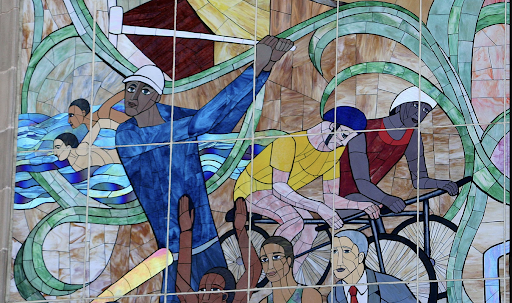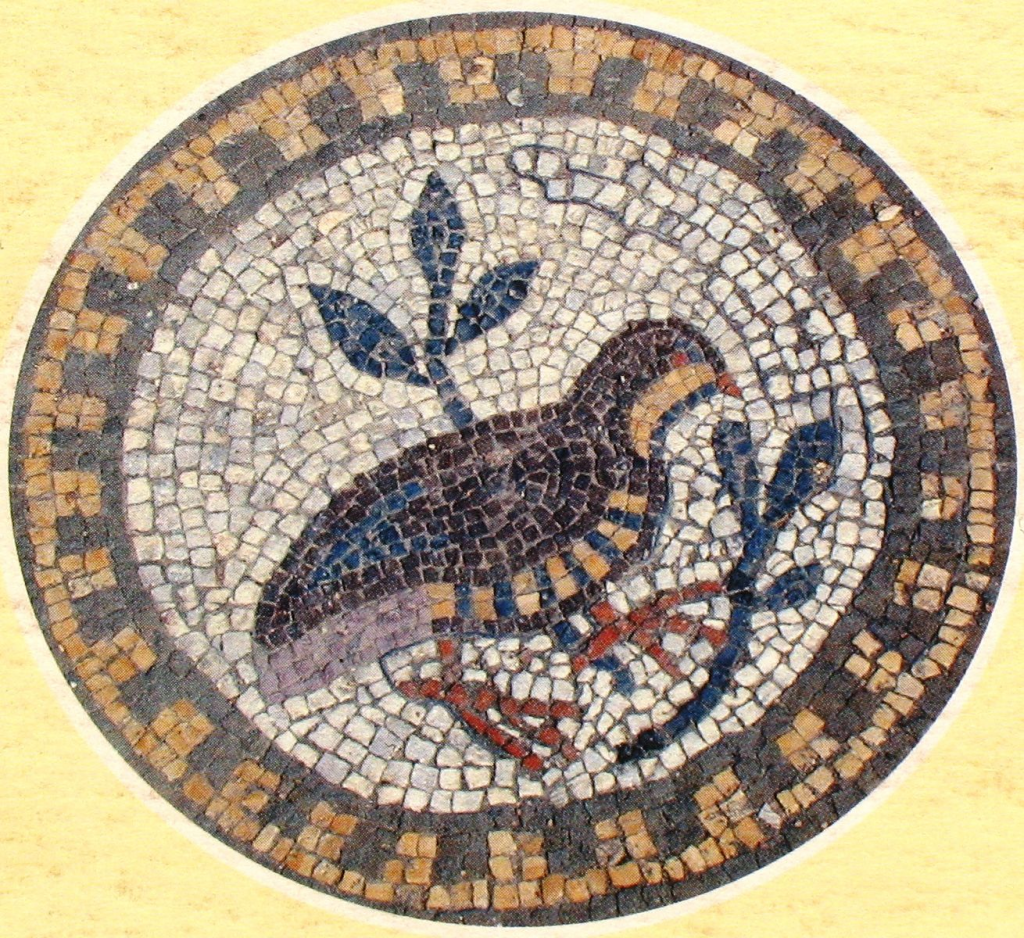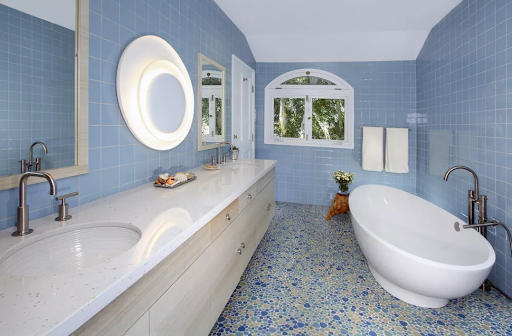Ukraine is at the center of world news right now – drawing attention not only to its residents, but also its culture. As we learn more about the country’s history, we’ve grown aware of its deeply rooted traditions and working artists. As we appreciate Ukrainian art, we also appreciate its creators and those who love it. All are in danger at this time, with both ongoing efforts to conserve and protect pieces, as well as online archiving work from groups like SUCHO.
There’s a wealth of mosaic artwork in Ukrainian cities – some old, some more modern, but all significant. In addition, contemporary artists are still working with mosaic in a variety of ways. We’ll introduce the history and stories of some significant mosaic artwork, with the hope that you’ll begin your own exploration. Although the war continues, the cultural legacy remains.
Early Mosaic Art
Although Ukraine hasn’t been the famed location of ancient mosaic artwork, compared to say, Pompeii or London, there are still outstanding examples present. Early Greek colonists in ancient city-state Chersonese Taurica left behind fine examples. In the 4th–2nd century BC, the area was a major presence on the Black Sea trading routes.
As such, the Greek influence and wealthy inhabitants created a demand for mosaic artwork. These floor mosaic rugs with peacocks, bathers, and quail are beautiful examples.



The ruins of Chersonese Tavria, located in the southwestern part of Crimea, are a UNESCO World Heritage Site.
St. Sophia Cathedral, Kyiv

St Sophia Cathedral in Kyiv is another of the seven world heritage sites in Ukraine. It contains unique mosaics and frescoes from the early 16th century. They’re considered masterpieces.
Built during the Golden Age of the 10th – 12th centuries, The Byzantine-style Cathedral was a product of the country’s recent conversion to Catholicism. Wood structures evolved into stone construction, and impressive architectural reaches. Domes soared, and interiors were highly decorative. The Sophia Cathedral influenced much of the future church construction in Ukraine.
St. Sophia’s apse mosaic artworks are breathtaking. There are tiles in 18 hues, with 143 tonal variations and 25 colors of gold and silver. They glitter next to the rich fresco wall paintings and display a mastery of shading and detail. This influential stylistic treatment of mosaics provided the model for the religious art in many Kyivan Rus and Ukrainian churches. It’s easy to see why.



Image source Wikimedia Commons
Soviet-Era Mosaics

Image source sovietmosaicsinukraine.org
The Mosaics Workshop at the Kyiv State Art Institute was formed in 1937. Subsequently, hundreds of large-scale mosaic murals were installed throughout Ukraine – all with a Soviet sensibility and messaging.
Today, they are regarded as pieces worth preserving. The combination of Soviet modernism and national features of the visual Ukrainian culture defines an important era – although the message of the pieces is reviled.
Their style ranges widely – part of the reason for their popularity with conservationists. In this example, we see realism of Vasyl Ovchynnykov’s ‘Mother Nursing Her Child’ as displayed on a wall of the Bogdan and Varvara Khanenko Museum of Arts.

The colors of this 1970s mosaic artworks are still bright on the main building of the Institute of Macromolecular Chemistry. The use of bright colors and the figures were heavily influenced by Ukrainian folk art, but the Soviet-era rhetoric was always present – exhorting citizens to strive, excel, and cooperate.

Many of the large mosaic murals, particularly on the exteriors of buildings, are made from a variety of materials, including ceramic tiles and pieces of sculpted colored cement. Their innate durability was no match for recent reforms, where many were destroyed. After the Revolution of Dignity in 2014, the Ukrainian government approved laws forbidding communist symbols such as state flags, coats of arms, and the iconic sickle and hammer.

The earliest Soviet-era mosaics still in existence in Ukraine date from the 1930s – two portraits of Lenin and Stalin on a brick water tower in Novhorod-Siverskyi.

Contemporary Ukrainian Mosaic Artists
There’s been a natural progression for Ukrainian mosaic artists. In a country still populated with monumental Soviet murals, they’re sure to provide a heavy influence in today’s mosaic artworks. Anatoliy Gankevich is one such artist. Born in Odessa in 1965, he now creates meticulous paintings that look like a mosaic.

Image source Beauty Will Save
The old CCCP-promoting murals are definitely source material for his new works. However, the updated scenes provide an ironic twist to the older styles.

Image source Beauty Will Save

Image source perezartsplastiques.com
Ukrainian artist Oksana Mas works in a variety of media but is perhaps best known for her large mosaic artworks. For many of her pieces, she uses the traditional hand-painted wooden eggs of the Ukrainian folk art pysankas.
“Altarpiece of Nations” was part of the main program for the 2011 Venice Biennale. The installation represented fragments of the 15th-century Ghent Altarpiece by the Flemish Van Eyck brothers. It required 3,640,000 eggs and measured 92 by 134 meters.
The next phase of her multi-phase project involving mosaic and eggs will be the “Human Race Masterpiece”. Intended for viewing for everyone, even those in space, it will be located in the Nevada desert. It’s projected to use more than 5 million eggs.

Contemporary artist Lyubov Meshakina works with mixed media to create her mosaic wall art – including eggshells. After sterilizing, she paints both sides of the shells to create a palette of colors. They are dried for a week, then broken into the small pieces she works with.
The size of the tiny pieces and the precision of the work see Meshakina using surgical tools to place each shell fragment.


A modern version of the gigantic Soviet mosaic pieces seems a fitting close to our piece. “Children” by Konstantin Skrytutskyi covers an entire wall of a Kyiv building. The brightly-colored faces of young children peer out at neighborhood traffic.

It’s a frequent stop on walking art tours around the city – which often include the Landscape Alley development. It contains dozens of murals, statues, sculptures, and an Alice in Wonderland playground.

Just as in many popular public parks around the world, the pieces are covered with mosaic tiles. Visitors can enjoy all sorts of the mosaic sculptures.

Stay in touch with the latest art news and mosaic-rich destinations around the world by signing up for our newsletter!

